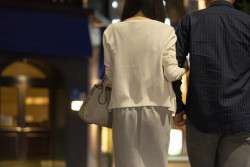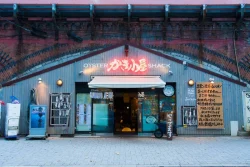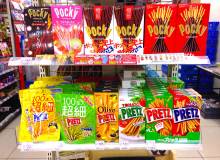
November 6, 2008
Peace Prize
After going missing in Mexico for more than 30 years, Taro Okamoto’s Myth of Tomorrow is about to be unveiled inside Shibuya station. Here’s the inside story of the efforts to recover and restore one of the artist’s most stunning works.
By Metropolis
Originally published on metropolis.co.jp on November 2008

Glimpses of Taro Okamoto on television or in photographs often showed the avant-garde artist with his hands moving in circles in front of his face, flashing the cheeky grin and bulging eyes that became as well-known as his proclamation: “Art is an explosion!”
Such expressions and imagery usually found their way into self-reflective paintings and sculptures—colors bursting forth, swirling patterns and distorted facial features—that made Okamoto one of Japan’s most revered contemporary artists.

Courtesy of Shibuya City
Yet 12 years after his death, Okamoto still has one bullet left in the chamber. Asu no Shinwa (“Myth of Tomorrow”), a large mural that the artist painted in Mexico but which disappeared for decades before being rediscovered and arduously restored, will get a new home inside a walkway of Shibuya station on November 17.
The 14 panels of the painting, measuring a total of 5.5m x 30m, depict the gruesome result of an atomic bomb detonation. This subject might seem anomalous for the bustling Shibuya area, which is known as a center of youth culture and shopping. But that is part of the point.
“This is what I want to show the youth of Japan,” explains Akiomi Hirano, general producer of the project for the Taro Okamoto Memorial Foundation for the Promotion of Contemporary Art. “Taro Okamoto has a sort of energy and charisma that pushes the backs of the younger generation, providing a positive influence that moves them forward.”

Courtesy of Shibuya City
Hirano, who proudly describes himself as the “parent” of the artwork, was on hand for the final preparations that took place in the wee hours of a Friday morning last month. Along the wall of a walkway near the entrance of Shibuya station’s Inokashira line, construction workers hoisted each of the one-ton panels onto rails and slid them into place much like a shoji screen.
Given the challenges in finding a suitable location for a piece of such size, Hirano was relieved to receive written support from the shopkeepers in the surrounding area. Shibuya was selected in March following a competition that included the cities of Suita (in Osaka) and Hiroshima. “The two other municipalities said they would create a space just for its placement,” he explains, “but then there was concern about payment and insurance. Luckily, Shibuya had this big space open to the public.”
Equal to the sizeable dimensions of Myth of Tomorrow is the work’s startling theme: a distorted skeletal figure burns in the center as jagged streams of red and yellow streak outward through a darkened sky interspersed with skull-like shapes and formless bodies—an allusion to the 1945 atomic bombings of Hiroshima and Nagasaki.
Okamoto agreed to paint this scene in 1967 for a Mexican developer that wanted to place it in the lobby of a luxury hotel in Mexico City. That year, he created four smaller sample versions of Myth of Tomorrow. The fourth, which today is housed in the Taro Okamoto Museum of Art in Kawasaki, contains color patterns that are noticeably more macabre than even that of the final version.

Courtesy of Shibuya City
Between 1968 and 1969, Okamoto made frequent trips to Mexico City, where he established a studio inside a space that was being built as a supermarket. Archival photos show the painting extending nearly to the building’s ceiling as the artist and his assistants apply finishing touches while standing precariously atop ladders and scaffolding. In Japan, Okamoto was simultaneously working on the 70m-tall, bird-like sculpture Taiyo no To (“Tower of the Sun”), which features three ghoulish faces mounted between a pair of wings spanning over 50m from tip to tip. This became the emblem of Expo ’70 in Osaka. “He was in the same state of mind,” explains Hirano of that period. “So the same kind of feelings and ideas are in both pieces.”
Okamoto felt right at home in Mexico, whose Day of the Dead celebrations and associated symbolism, such as masquerade and skeletons, influenced his work. Indeed, the large sculpture Afternoon, on display at the Tama Cemetery, shows one of his better-known characters: that of a pair of hands gripping a smirking mask.
But when the Mexican developer encountered financial troubles in 1969, ownership of the hotel changed hands. Subsequently, Myth of Tomorrow was taken apart, moved—and misplaced. It remained lost until 2003, when it was found abandoned in a suburban building materials yard.

©Taro Okamoto Memorial Foundation for the Promotion of Contemporary Art
At the artist’s side during the painting’s creation (and for much of his life) was Toshiko Okamoto, his long-time companion, secretary and, eventually, legally adopted daughter. Toshiko, who died in 2005, had spent years searching for the painting, driven by the belief that this was one of his masterworks. “It is not so much about the atomic bomb and suffering as it is about giving hope to the people,” Hirano says of Toshiko’s feelings. “It really had a positive image, and she wanted to express that to the younger generation. She said that finding it was the one thing she wanted to do before she died.”
The mural, whose base material is a combination of concrete and chrysotile (a type of processed asbestos that foundation officials say is completely safe), had suffered substantial cracking over the decades. The Taro Okamoto Memorial Foundation subsequently obtained the rights to it and began the process of shipping it to Japan, which proved to be a challenging task.
In its first incarnation, the mural comprised seven panels. “The biggest difficulty I had to overcome was the fact that it is big,” says Hirano. “In bringing an art piece to one country from another, common sense says that you bring it in its original form. But in this case, that was not possible.”
After studying the condition of the mural, Hirano suggested that it be broken down along the cracks into movable pieces—similar to a jigsaw puzzle—and shipped in a container. “After I talked to Toshiko,” Hirano recalls, “she said that it would be like cutting her flesh. Yet she said that we should go ahead.”
Upon the painting’s arrival in Japan in 2005, the restoration process required multiple stages. The rough sections had to first be reassembled. Weights were used to flatten the pieces, whose surfaces had become uneven. The cracked edges were smoothed over with power sanders, and the empty spaces filled with a white calcium silicate substance to within 1mm of the painting’s surface. Once joined together again, the mural was subdivided into 14 panels for mobility.

©Taro Okamoto Memorial Foundation for the Promotion of Contemporary Art
The homecoming given to Myth of Tomorrow was much more positive than Okamoto himself experienced 60 years before. Born in 1911 in Kawasaki, the artist studied philosophy and sociology at the University of Paris before serving in the Imperial Army in China during World War II. Following his return to Japan in 1946, he harbored antiwar sentiments. Soon after, he established a studio in Setagaya that would later move to Aoyama, which today is the location of the Taro Okamoto Memorial Museum. He died of acute heart failure in 1996.
For structural reasons, the four edges of each panel were reinforced with a steel rim, and the back was covered in layers of acrylic of epoxy. On the painted side, surgical knives were used to chip away at bits of lodged paint and cement; pure water and cotton swabs cleared away dirt. Specialists employed the same magnifying scope used in the restoration of da Vinci’s The Last Supper.
Roughly 8,000 small chips and slivers collected in Mexico were then painstakingly reinserted, and the remaining 1mm-deep depressions—formerly gaps between the puzzle pieces—were painted over to replicate the original. For some of these areas, computer projections were overlain onto the surface so the workers could match the colors appropriately. As a final measure, a special coating was sprayed over the painting’s surface to shield it from ultraviolet light.
The budget for the project, which Hirano says was “a few hundred million yen,” came from various sources. Private donors contributed a portion, but the greatest benefactor was Nippon Television, whose headquarters building in Shiodome displayed the restored Myth of Tomorrow for two months in the summer of 2006. The mural was subsequently shown at the Museum of Contemporary Art, Tokyo earlier this year.
Myth of Tomorrow is often compared to Picasso’s Guernica, which depicts the bombing of a Spanish city by the Nazis in 1937. In a similar way, Okamoto’s piece warns against apathy toward the horrors of war, a concept that Hirano believes resonates today. “With the situation in Iraq as it is, of course the meaning of this painting is appropriate,” he says. “Even during the cold war, there were wars, but not so close as to affect our daily lives. And then there was 9/11. Unfortunately, this is the time and age in which we are living.”
Those words are echoed by Hiroko Kato, who curated the recent exhibition at the Museum of Contemporary Art, Tokyo. “Taro Okamoto’s works deal with universal themes. They are not just the records of past tragedy. That is why I believe spectators will find something new and fascinating in his works from age to age. Myth of Tomorrow gives people a refreshing surprise in terms of the scale beyond our imagination, dynamic composition and bright colors—as well as its theme.”
For more information on this article, see The Tokyo Reporter (www.tokyoreporter.com).
Taro Okamoto’s legacy is alive in Tokyo and the surrounding area
Taro Okamoto Memorial Museum
For more than 50 years, Okamoto called Minami-Aoyama home, and this museum preserves his studio, residence, garden and roughly 600 of his creations. A café sits on the first floor, and a gallery space is upstairs. The descending red text reading “TARO” and the big-eyed facial image on the block wall outside make finding it a snap from the street.
Open Wed-Mon 10am-6pm, closed Tue. 6-1-19 Minami-Aoyama, Minato-ku. Tel: 03-3406-0801. Nearest stn: Omotesando, exit A5. www.taro-okamoto.or.jp
Taro Okamoto Museum of Art
This sprawling museum in Kawasaki displays many of Okamoto’s works and those of his parents, Kanoko and Ippei. The current “Defying” exhibition, which includes the large oil paintings Heavy Industry (1949) and Challenge (1975), runs through January 12.
Open Tue-Sun 9:30am-5pm, closed Mon. 7-1-5 Masukata, Tama-ku, Kawasaki. Tel: 044-900-9898. Nearest stn: Noborito (JR Nambu or Odakyu line). www.taromuseum.jp
Yakudo no Mon, 1993
An arching sculpture topped by twisted bodies that resemble the images in the two far-left panels of Myth of Tomorrow.
Location: At the entrance to Urayasu Athletic Park in Chiba. Nearest stn: Maihama (JR Keiyo line).
Taiyo (“Sun”), 1985
An ode to the Sun God, this sculpture features thorn-like beams ringing a golden face that is grinning just like most Okamoto pieces.
Location: On the roof of the Sogo department store in Yokohama. Nearest stn: Yokohama, east exit. www2.sogo-gogo.com/yokohama
Kodomo no Ki (“Tree of Children,” right), 1985
Showing that maybe Okamoto was a child at heart, this collection of colorful and smiling branches fixed to a central trunk represents the playfulness of being a kid.
Location: In front of Kodomo no Shiro (National Children’s Castle) in Aoyama. Nearest stn: Shibuya or Omotesando, exit B2. www.kodomono-shiro.jp
Wakaitokeidai (“Young Clock Tower”), 1966
The elements (and the birds) have not been kind to this aging piece, which features striking colors and waving, spiky tendrils. A clock on top gives the time to Ginza shoppers.
Location: Inside Sukiyabashi Park, Ginza. Nearest stn: Ginza, exit C2 or JR Yurakucho.
Gogo no Hi (“Afternoon”), 1967
The smiling mask sculpture marks the location of Okamoto’s grave.
Location: Inside Tama Cemetery, Fuchu. Nearest stn: Tamagawa (Seibu Tamagawa line). www.ee22.info







